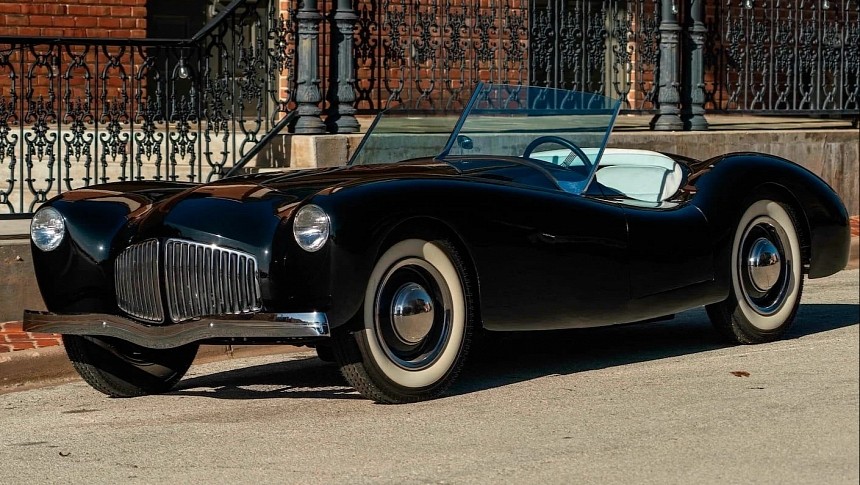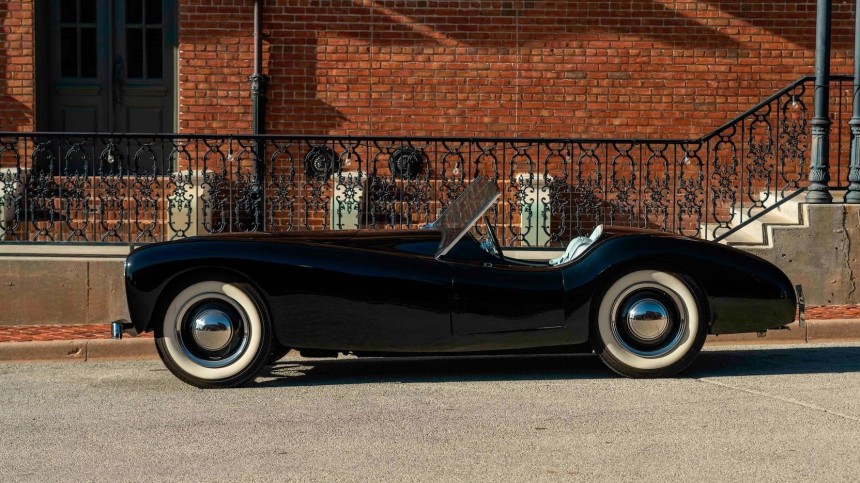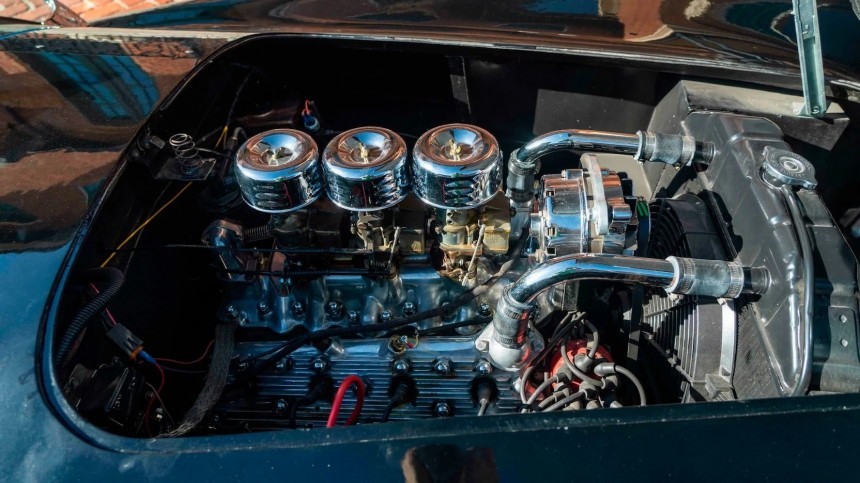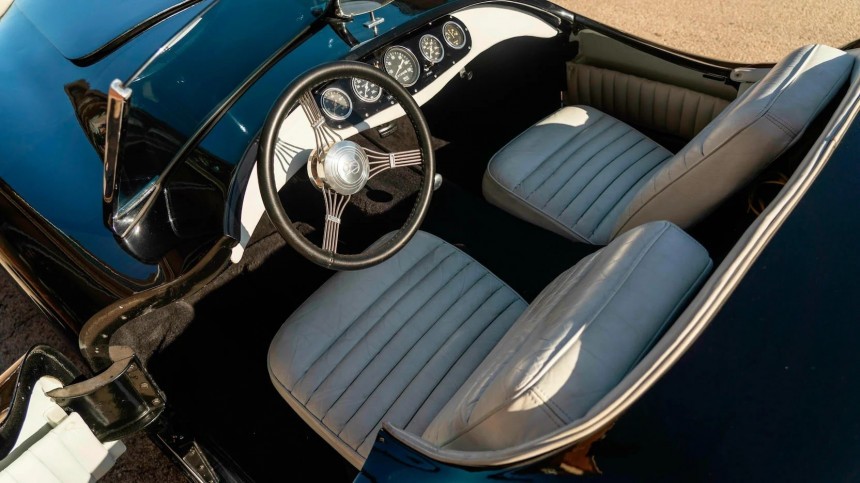Glasspar is a name that might sound more familiar to vintage boat lovers rather than petrolheads, but the Costa Mesa, California-based business also had a small automotive branch that left a lasting impact on the car-making industry. Glasspar pioneered the use of fiberglass in automobile design and construction, and their G2 sports car paved the way for today’s kit car industry.
Glasspar was founded by boat builder and marine architect Bill Tritt in 1947 and started out making sailboats. The company was the first in the world to use fiberglass to make boat hulls, and by the mid-50s, it was one of the largest manufacturers in the field.
Tritt’s involvement with the automotive industry began after he recognized the potential of fiberglass, a revolutionary material at the time, as a great alternative to traditional materials like steel and aluminum due to it being lightweight, rust-proof, and durable. He created the first fiberglass body for a custom car he made in partnership with Kenneth “Kenny” Brooks, a talented race car driver. It was a lightweight sports car called the “Brooks Boxer” that garnered plenty of interest nationwide. The success of this custom project sparked the idea for Glasspar G2.
Not only did the use of fiberglass lead to significant weight reduction in car manufacturing compared to steel or aluminum, but it also significantly simplified the process of fabricating car bodies.
The Glasspar G2, the first low-volume production fiberglass car in the world, was unveiled in 1949, four years before the first Corvettes with all-fiberglass bodies were produced, and marked the start of a new era in the industry. The majority of Glasspars were sold as separate bodies or body/chassis kits, but a few were sold as finished turn-key cars from the factory. Besides the Glasspar, Tritt also supplied complete bodies for the Kaiser-Darrin 161, the Willys-based Woodill Wildfire, and the Volvo P1900.
The versatile design of the G2 was seen as a great advantage by many customers, as it allowed them to customize their vehicles with an engine, transmission, and suspension of their choice. This helped popularize kit cars and marked the beginning of an entire industry, that of DIY car construction.
Only around 150 Glasspar G2 units were built between 1951 and 1955, and just 29 are known to still be in existence today. One of them is this neat-looking 1951 example that has been on display at the Horton Classic Car Museum in Nocona, Texas, for the last few years and also made an appearance at the 2007 Amelia Island Concours d’Elegance.
While the G2 was typically equipped with a Ford flathead V8 or a small-block Chevrolet V8 engine, this particular unit takes power from a Mercury 255 cubic-inch flathead V8 engine and sends it back through a three-speed manual transmission with Hurst Indy shifter. Three two-barrel carburetors, a set of Offenhauser heads, and a polished aluminum intake manifold are also part of the configuration.
Unlike later mass-produced cars with fiberglass bodies, the G2’s body was hand laid, making it mighty strong and durable despite its light weight.
Like most G2s, this example also features a low profile with elegant flowing lines, reminiscing the then-popular Jaguar XK120. The lightweight fiberglass body is mounted on a tubular steel chassis, giving the vehicle a superior power-to-weight ratio compared to the much heavier steel-bodied sports cars
When you look at it from the front, a standout feature is the chrome bumper and grille. It also has a tinted windshield and two doors. As standard, the Gasspar G2 body had only a passenger door, and the driver had to climb over the side to get in the car. It rides on a set of steel wheels wrapped in whitewall tires and boasting chrome hubcaps and trim rings.
Apart from its striking looks, the G2 also excelled in the performance department. The low curb weight (under 2,000 pounds) made the car faster and more agile than its steel-bodied counterparts. Moreover, the long-hood design allowed for the engine to be mounted behind the front axle, leading to an almost 50:50 weight distribution front to rear.
The Glasspar G2 in question here boasts a black livery complemented by a plush-looking interior. It features white pleated bucket seats for the driver and passenger and a banjo-style steering wheel.
This groundbreaking car, with its innovative design and lightweight body, might be less known among classic car enthusiasts, but it surely left a lasting legacy in the automotive world. Since very few Glasspar G2s are known to have survived to this day, they are now considered valuable collector’s items.
This 1951 Glasspar G2 was the recipient of a first-place trophy at the 2013 American Hero Classic Car Show in Texas and is a valuable piece of automotive history that is set to go under the hammer in mid-April in Houston, Texas.
Tritt’s involvement with the automotive industry began after he recognized the potential of fiberglass, a revolutionary material at the time, as a great alternative to traditional materials like steel and aluminum due to it being lightweight, rust-proof, and durable. He created the first fiberglass body for a custom car he made in partnership with Kenneth “Kenny” Brooks, a talented race car driver. It was a lightweight sports car called the “Brooks Boxer” that garnered plenty of interest nationwide. The success of this custom project sparked the idea for Glasspar G2.
Not only did the use of fiberglass lead to significant weight reduction in car manufacturing compared to steel or aluminum, but it also significantly simplified the process of fabricating car bodies.
The versatile design of the G2 was seen as a great advantage by many customers, as it allowed them to customize their vehicles with an engine, transmission, and suspension of their choice. This helped popularize kit cars and marked the beginning of an entire industry, that of DIY car construction.
Only around 150 Glasspar G2 units were built between 1951 and 1955, and just 29 are known to still be in existence today. One of them is this neat-looking 1951 example that has been on display at the Horton Classic Car Museum in Nocona, Texas, for the last few years and also made an appearance at the 2007 Amelia Island Concours d’Elegance.
Unlike later mass-produced cars with fiberglass bodies, the G2’s body was hand laid, making it mighty strong and durable despite its light weight.
Like most G2s, this example also features a low profile with elegant flowing lines, reminiscing the then-popular Jaguar XK120. The lightweight fiberglass body is mounted on a tubular steel chassis, giving the vehicle a superior power-to-weight ratio compared to the much heavier steel-bodied sports cars
When you look at it from the front, a standout feature is the chrome bumper and grille. It also has a tinted windshield and two doors. As standard, the Gasspar G2 body had only a passenger door, and the driver had to climb over the side to get in the car. It rides on a set of steel wheels wrapped in whitewall tires and boasting chrome hubcaps and trim rings.
The Glasspar G2 in question here boasts a black livery complemented by a plush-looking interior. It features white pleated bucket seats for the driver and passenger and a banjo-style steering wheel.
This groundbreaking car, with its innovative design and lightweight body, might be less known among classic car enthusiasts, but it surely left a lasting legacy in the automotive world. Since very few Glasspar G2s are known to have survived to this day, they are now considered valuable collector’s items.
This 1951 Glasspar G2 was the recipient of a first-place trophy at the 2013 American Hero Classic Car Show in Texas and is a valuable piece of automotive history that is set to go under the hammer in mid-April in Houston, Texas.














